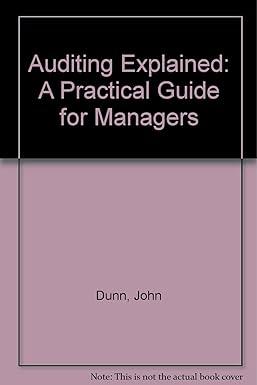Question
Hefty Inc. produces plastic storage containers. The company makes two sizes of containers: regular (55 gallon) and large (100 gallon). The company uses the same
Hefty Inc. produces plastic storage containers. The company makes two sizes of containers: regular (55 gallon) and large (100 gallon). The company uses the same machinery to produce both sizes. The machinery can be run for only 2,500 hours per month. Hefty can produce 20 regular containers every hour, whereas it can only produce 8 large containers in the same amount of time. Fixed costs amount to $1,000,000 per month. Sales prices, variable costs, and monthly demand are as follows:
| Per Unit | Regular | Large |
| Sales price | $105 | $225 |
| Variable costs | 28 | 42 |
| Demand | 30,000 | 20,000 |
Total investment $150,000,000
Required rate of return 10% per year
Consider each of the following INDEPENDENT scenarios:
- To maximize profits, how many of each size container should Hefty produce per month? Prepare an income statement with this level of sales. What other strategies might Hefty consider (answer this question on the conclusion tab).
- Assume the company makes only the regular product. Hefty is a price taker. The market price for the regular container recently dropped to $100 per container as there is a new low-cost online market entrant. Hefty needs to earn the necessary income to satisfy its financial stakeholders. How much does Hefty need to reduce costs to satisfy its required rate of return?
3. Hefty Inc. is deciding whether to outsource the production of a type of glue that is included in its containers. Hefty currently makes 10,000 bottles of glue with a variable cost of $.90 per bottle. If Hefty Inc. outsources, it can buy the glue ready-made for $1.20 per bottle and can shut down the production facilities it is currently using to manufacture the glue, which cost $12,000 per year. What is the effect of outsourcing? What other factors should Hefty consider?
- The conclusion should be formatted as follows:
| Total | |||||
| Regular | Large | Company | |||
| Scenario 1: | |||||
| Number of units produced | XXXX | XXXX | |||
| Operating income | $XXXXX | ||||
| What other factors should Hefty consider? | |||||
| XXXX | |||||
| Scenario 2: | |||||
| Reduction in fixed costs needed | $XXXX | ||||
| What other factors should Hefty consider? | |||||
| XXXX | |||||
| Scenario 3: | |||||
| Hefty should: | OUTSOURCE OR NOT? | ||||
| Financial impact of decision: | $XXXXX | ||||
Step by Step Solution
There are 3 Steps involved in it
Step: 1

Get Instant Access to Expert-Tailored Solutions
See step-by-step solutions with expert insights and AI powered tools for academic success
Step: 2

Step: 3

Ace Your Homework with AI
Get the answers you need in no time with our AI-driven, step-by-step assistance
Get Started


